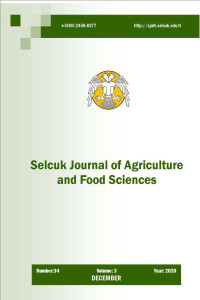Öz
This study assesses the greenhouse gases (GHG) emissions of sugar beet production under different irrigation and nitrogen fertilizing strategies. This manuscript is an evaluation of the production inputs used in a research carried previous on sugar beet and its conversion into GHG emissions equivalent. This paper evaluates the potential for environmental mitigation, including the reduction of total GHG emissions from agricultural inputs in sugar beet production by managing irrigation and nitrogen fertilizing. In this context, the nine treatments based on three different irrigations (full irrigation, conventional deficit irrigation, partial root drying irrigation) and three nitrogen fertilization strategies (full nitrogen, partial deficit nitrogen, moderate deficit nitrogen) were assessed. The results of evaluation showed that DI-N1 strategy can reduce irrigation water and nitrogen use up to 25% compared to control treatment (FIN). In addition, this strategy saved 25% of electricity consumption use for irrigation. The analyse of pollution in this study led to very important findings: more environment-friendly irrigation and fertilization practices by using less water and nitrogen have a considerable potential for environmental mitigation in sugar beet production
Anahtar Kelimeler
Sugarbeet Greenhouse gas (GHG) emissions Irrigation Environmental pollution
Ayrıntılar
| Birincil Dil | İngilizce |
|---|---|
| Konular | Agronomi |
| Bölüm | Araştırma Makalesi |
| Yazarlar | |
| Yayımlanma Tarihi | 25 Aralık 2020 |
| Gönderilme Tarihi | 2 Ekim 2020 |
| Yayımlandığı Sayı | Yıl 2020 Cilt: 34 Sayı: 3 |
Selcuk Journal of Agriculture and Food Sciences Creative Commons Atıf-GayriTicari 4.0 Uluslararası Lisansı (CC BY NC) ile lisanslanmıştır.


